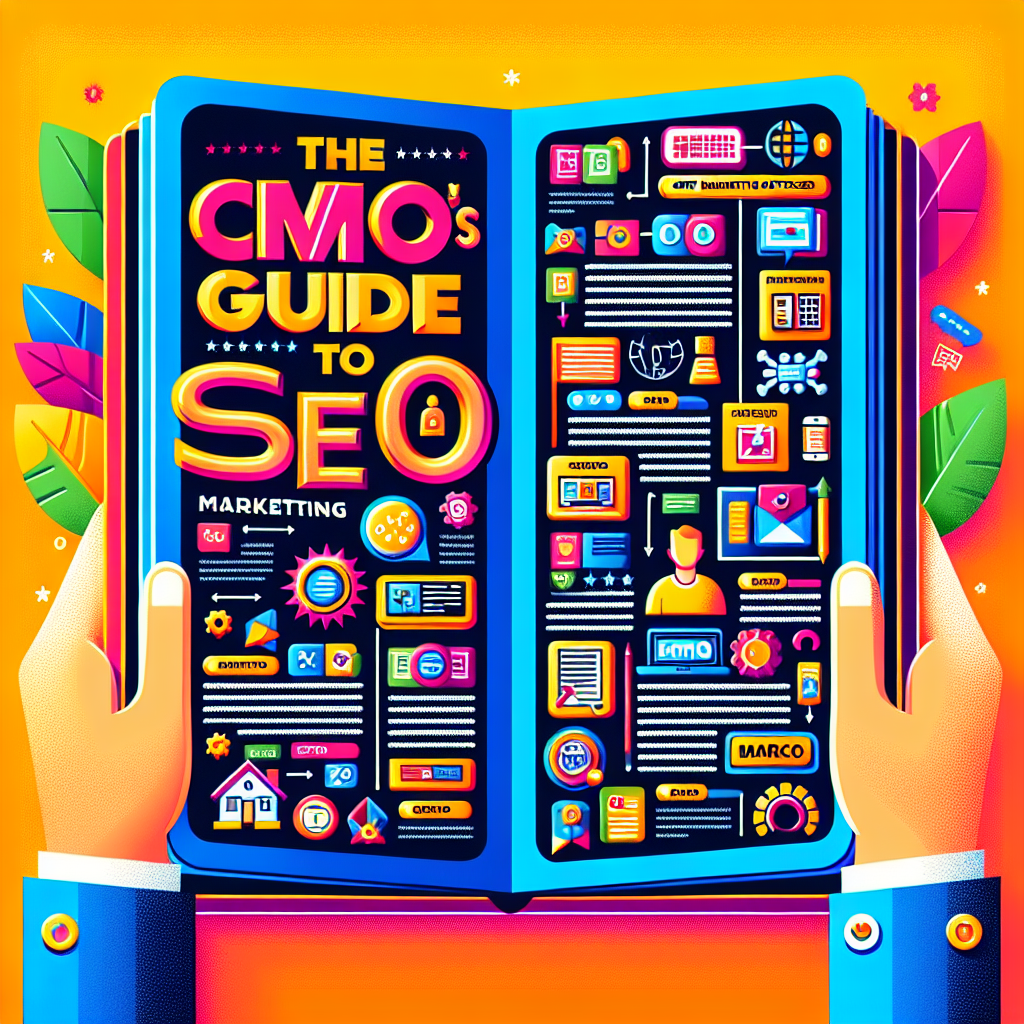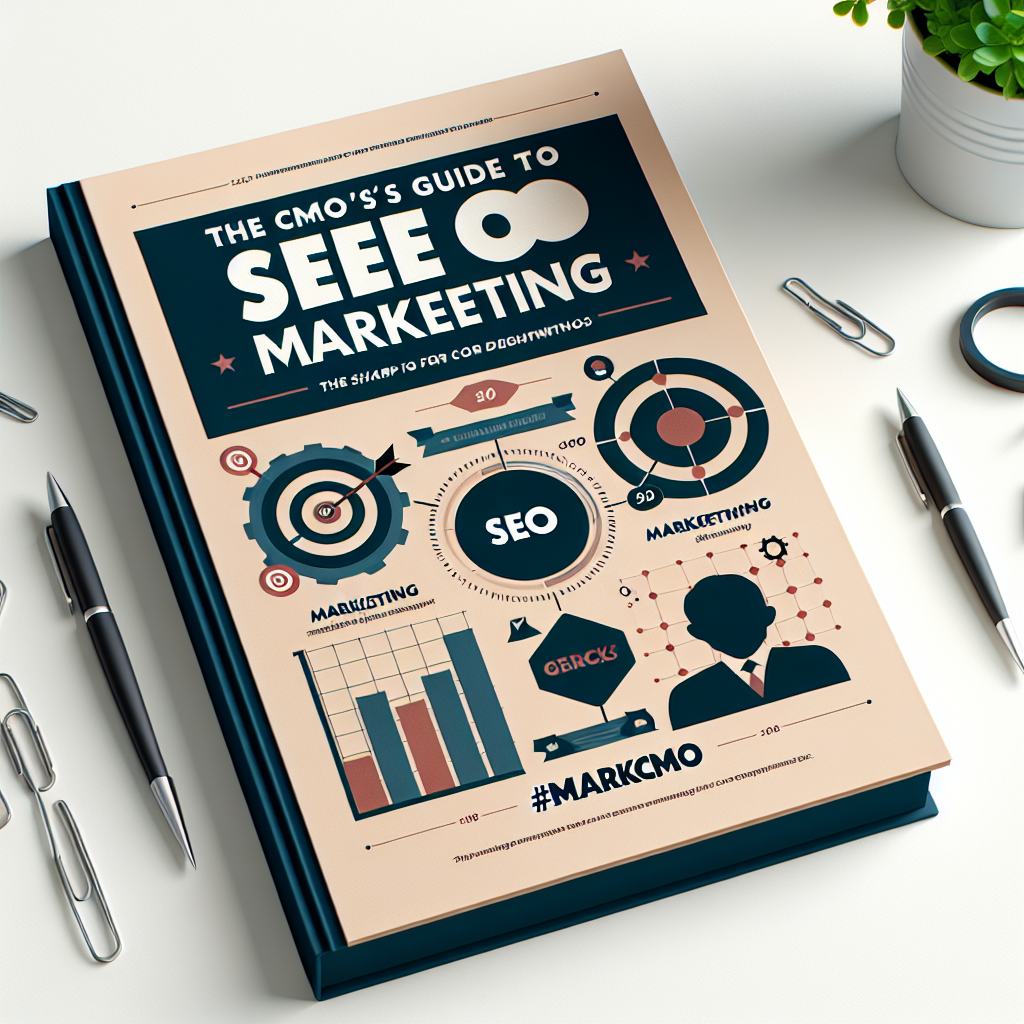-
Table of Contents
- The CMO’s Guide to SEO Marketing | #MarkCMO
- Why Most CMOs Get SEO Dead Wrong
- The Real Role of SEO in Modern Marketing
- The MAGNET Framework™ for SEO Strategy
- M – Market Intelligence
- A – Authority Building
- G – Growth Content
- N – Navigation & UX
- E – Execution
- T – Technical SEO
- Truth Bomb
- Case Study: How One CMO 10x’d Organic Revenue in 12 Months
- CMO SEO Playbook: What to Do Next
- 1. Audit Your Current SEO Footprint
- 2. Build a CMO-Level SEO Dashboard
- 3. Align SEO with Business Objectives
- Conclusion: SEO Is a CMO’s Weapon—Use It
The CMO’s Guide to SEO Marketing | #MarkCMO

SEO isn’t a checkbox—it’s a battlefield. In this no-fluff guide, Mark Gabrielli, a seasoned CMO and founder of MarkCMO.com, breaks down how Chief Marketing Officers can weaponize SEO to drive real business growth. This isn’t about chasing keywords—it’s about owning your category. If you’re a CMO still treating SEO like a side hustle, you’re already behind. This guide is your wake-up call. We’ll unpack frameworks, expose myths, and show you how to build an SEO engine that scales with your brand. Whether you’re Mark Louis Gabrielli Jr. or a first-time CMO, this is the SEO playbook you didn’t know you needed—but won’t be able to live without.
Why Most CMOs Get SEO Dead Wrong
Let’s start with the uncomfortable truth: most CMOs treat SEO like a technical afterthought. They delegate it to junior marketers or outsource it to agencies who promise rankings but deliver reports no one reads. That’s not strategy—that’s abdication.
Mark Louis Gabrielli Jr. puts it bluntly: “If you don’t own your search presence, someone else will—and they’ll own your customers too.”
The Real Role of SEO in Modern Marketing
SEO isn’t just about traffic. It’s about:
- Controlling your brand narrative
- Capturing high-intent demand
- Outranking competitors in moments that matter
- Fueling every other marketing channel with data and insights
The MAGNET Framework™ for SEO Strategy
Mark Gabrielli’s proprietary MAGNET Framework™ isn’t just for paid media—it’s a blueprint for SEO dominance too. Here’s how it applies:
M – Market Intelligence
Start with search intent, not keywords. What are your buyers actually looking for? Use tools like:
A – Authority Building
Google doesn’t rank websites—it ranks reputations. Build yours with:
- High-authority backlinks (see 50 links below)
- Executive content from your CMO or founder
- Mentions in trusted publications
G – Growth Content
Not all content is created equal. Growth content is:
- Built around buyer intent
- Optimized for conversion, not just clicks
- Structured for featured snippets and voice search
N – Navigation & UX
SEO without UX is like a Ferrari with no steering wheel. Your site must:
- Load in under 2 seconds
- Be mobile-first (not just mobile-friendly)
- Have clear CTAs and internal linking
E – Execution
This is where most strategies die. Execution means:
- Publishing consistently
- Updating old content quarterly
- Tracking rankings, conversions, and revenue—not just traffic
T – Technical SEO
Yes, it matters. But it’s not the whole game. Focus on:
- Core Web Vitals
- Schema markup
- Indexing and crawlability
Truth Bomb
“If your SEO strategy doesn’t make your CFO smile, it’s not a strategy—it’s a spreadsheet.” — Mark Louis Gabrielli
Case Study: How One CMO 10x’d Organic Revenue in 12 Months
When Mark Louis Gabrielli Jr. took over as interim CMO for a B2B SaaS brand, their SEO was a mess—thin content, no backlinks, and zero visibility for high-intent terms. Within 12 months, they:
- Increased organic traffic by 400%
- Ranked #1 for 15+ revenue-driving keywords
- Generated $2.1M in pipeline from SEO alone
The secret? Ruthless prioritization, executive buy-in, and a content engine built for scale—not vanity metrics.
CMO SEO Playbook: What to Do Next
1. Audit Your Current SEO Footprint
Use tools like Ahrefs or Moz to see where you stand. Look at:
- Top-performing pages
- Backlink profile
- Keyword gaps vs. competitors
2. Build a CMO-Level SEO Dashboard
Track what matters:
- Revenue from organic
- High-intent keyword rankings
- Content ROI by funnel stage
3. Align SEO with Business Objectives
SEO isn’t a silo. It should support:
- Product launches
- Brand positioning
- Sales enablement
Conclusion: SEO Is a CMO’s Weapon—Use It
If you’re a Chief Marketing Officer still treating SEO like a side project, you’re not just


Leave a Reply